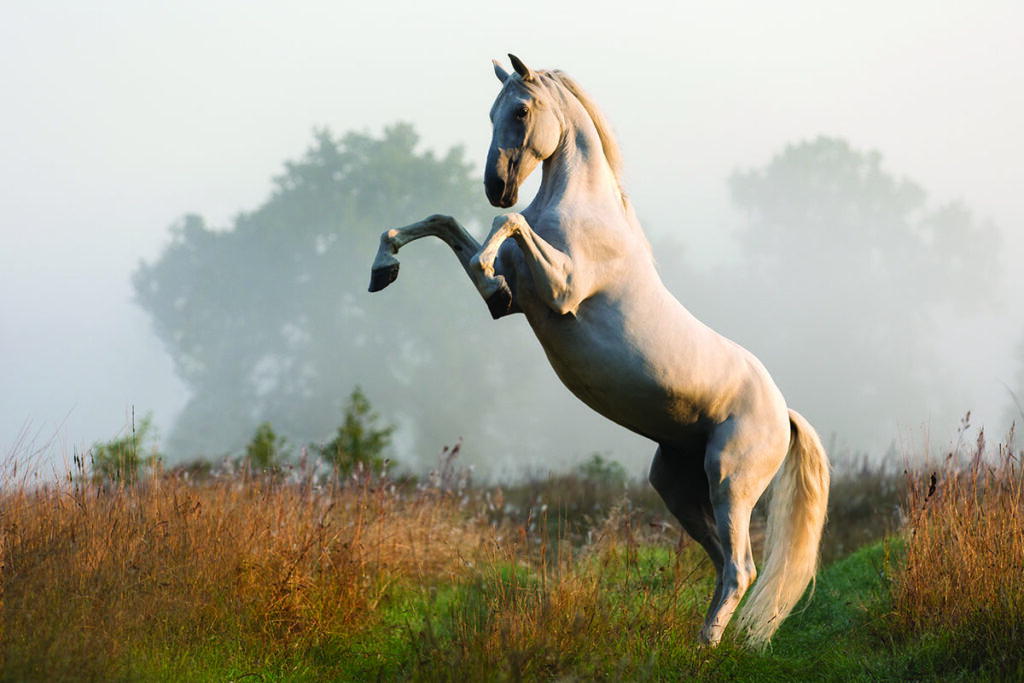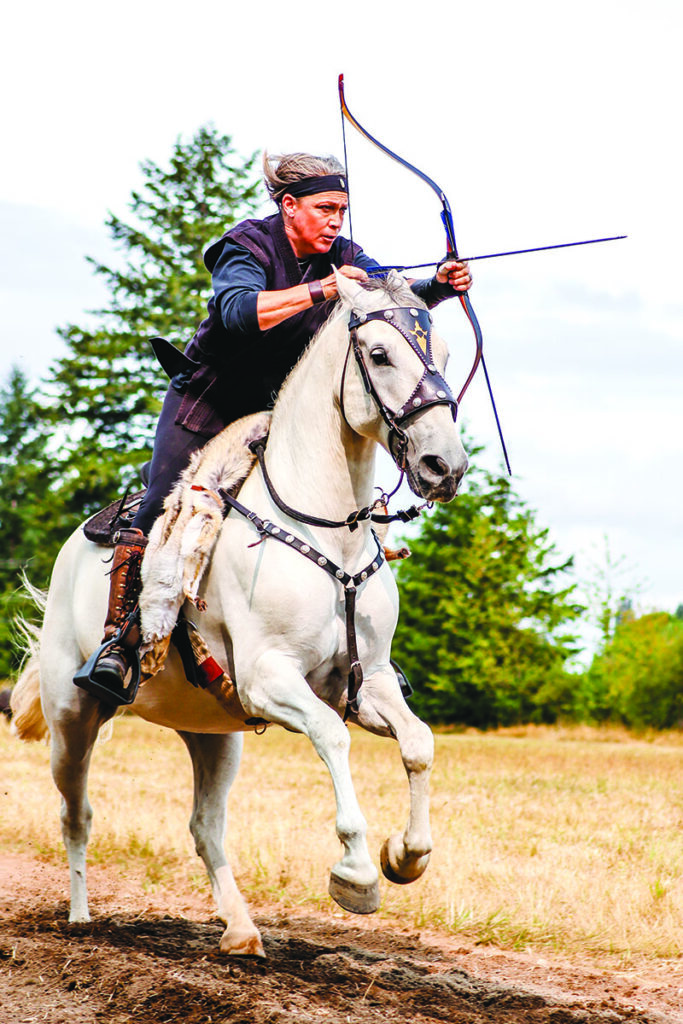Meet the Incredible Lipizzan Horse


During Medieval times, a horse’s main job was to carry men into battle during wartime and to pull carriages during times of peace. If you had good horses, you had everything you needed, during both war and peace.
In the mid-1500s, Austrian Archduke Charles II, ruler of Inner Austria, sought to create a special breed of horse. He imported Andalusian horses, Berbers and Barbs from Spain and crossed them with a now-extinct breed called the Karst, a rugged, high-stepping, light gray horse native to Austria. Charles’ brother, Maximilian II, the Holy Roman Emperor, also founded a stud at Kladrub in Austria (which is now part of the Czech Republic) with the same goal, and used Spanish breeds crossed with local horses. The elegant and powerful horses that resulted—eventually called Lipizzans—became heavy carriage horses at the Kladruby stud, and riding and light carriage horses at the Lipizza Stud of the Hapsburg monarchy.


The brothers exchanged breeding stock at times, crossing the lines to create aristocratic animals that were more than just war and work horses; they were partners in what had become the highly revered art of classical riding, which combined maneuvers used in battle with exercises that emphasized the horse’s athletic ability and obedience to the rider.
Charles and Maximilian were members of the Hapsburg family, rulers of the most influential monarchy in European history. Connoisseurs of fine horses, the brothers created the Lipizzan breed for their own use. In response to the growing admiration for classical riding during the Renaissance among the aristocracy, the Hapsburg family established the Spanish Riding School in Vienna to teach horses and riders these fine skills. Over the next two centuries, more Spanish and Arabian blood was infused into the breed to help strengthen the Lipizzan’s foundation breeding.
Six of the stallions used during the 18th and 19th century established the family lines still seen in the Lipizzan today. These stallions—Conversano, Favory, Maestoso, Neopolitano, Pluto and Siglavy—all came from lines that originated outside of Austria. To this day, Lipizzans are marked with an ancestral brand representing their family line.
Modern Breed
Many people think of Lipizzans as an exotic horse of the past, famous for its performances at the Spanish Riding School. The truth is that purebred Lipizzans are alive and well in today’s horse world, with more than 900 registered in the United States. These horses are competing in a variety of sports. In Eastern Europe, they are considered the premier driving horse.
It’s rare to see a Lipizzan in the U.S. because their numbers are small, so to help raise awareness of the breed, the United States Lipizzan Foundation (USLF) is working hard by using a comprehensive social media and advertising campaign meant to get the word out. The organization hopes to show that these horses, while they have a rich and fascinating history, have a place in modern competition.
“We feel these horses have a lot of abilities beyond the noncompetitive classical dressage you see in the Spanish Riding School,” says Sam Martinson, vice president of the USLF. “They have always been very successful in dressage competition. Many amateurs are now looking for an athletic horse of smaller stature who can compete at the top levels of the sport, which Lipizzans can do because the collection is so easy for them.”
She notes in 2020 alone, U.S. Lipizzan riders were at the top of their sports in dressage, driving, working equitation, mounted archery and western dressage.
“This is really something if you consider our population numbers and how few horses we have competing,” says Martinson.
Don’t be surprised if you see a Lipizzan the next time you attend a local dressage, driving or working equitation event.
“In recent years, there’s been a great deal of interest in both breeding these horses and buyers looking to purchase them for sport,” says Martinson. “We are excited to see people recognize the incredible athletic ability, temperament and trainability of a breed that has 500 years of careful breeding behind it.”
Lipizzan Horse Fast FactsHeight: 15.1 to 15.2 hands Color: Gray is most predominant. Occasionally black or brown. Overall Appearance: Head medium length with slightly convex profile. Neck medium-length, well arched with a narrow mane line. Withers well-developed and higher than the croup. The croup is strong, rounded, and well-muscled. Associations: |
This article about the Lipizzan horses appeared in the June 2021 issue of Horse Illustrated magazine. Click here to subscribe!
Recent Posts
Therapy Horses: Equine Miracle Workers
Without therapy horses, there would be no equine-assisted activities for helping humans. They’ve been referred to as “angels with four…
How the Vet Direct Safety Net Program is Helping Horse Owners
Through the Vet Direct Safety Net Program, a Kentucky horse lover helped her veterinarian get funds to help during her…
Santa Anita Park Officially Announced as LA28 Olympics Equestrian Venue
After a long wait, accompanied by much speculation and a final dramatic turn, the official equestrian sports venue for the…
ASPCA Right Horse Adoptable Horse of the Week: Camp Hope
Welcome to Horse Illustrated’s weekly installment of the Right Horse Adoptable Horse of the Week, offered in partnership with the…
2025 FEI Basel World Cup Finals Hands Reins to Fort Worth 2026
As U.S. athletes look back on valuable experience gained at the 2025 FEI World Cup Finals in Switzerland, the next…
How to Clean a Horse’s Sheath
If you’ve never cleaned a horse’s sheath, you probably have questions. First and foremost, is it really necessary? And more…